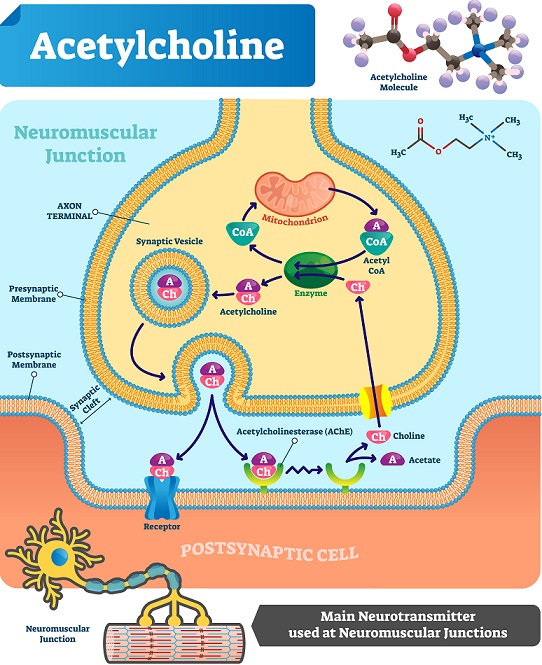If you�re experiencing reduced power, seeing a check engine light, and having a general sense of...
If you�re experiencing reduced power, seeing a check engine light, and having a general sense of �Hey, what�s going on here?� on your Mercedes, it�s probably due to limp mode.
In this article, we�ll explore what exactly it is, the signs that your Mercedes is in limp mode, and how you can reset or bypass it (safely, of course!).
What is Mercedes limp mode?
Imagine you�re running a marathon, and suddenly, you twist your ankle.
You wouldn�t keep running at full speed, right?
Instead, you�d slow down, maybe even limp, to avoid further injury.
Well, that�s kind of what happens with your Mercedes in limp mode.
Mercedes limp mode is a safety feature that turns on when an issue is detected with the car, helping to protect it from further damage.
When your Mercedes detects a problem � big or small � in its engine, transmission, or any other vital system, it switches to limp mode.
In limp mode, you might notice that the car won�t accelerate like usual, the RPMs are restricted, and it might even stick to just one gear, refusing to shift.
Mercedes limp mode is designed so that you can still drive � albeit slowly � to a safe location like your nearest mechanic or garage.
It makes sure that a small problem doesn�t turn into a big, expensive one.
What are the Mercedes limp mode symptoms?
Here are the symptoms of Mercedes limp mode:
Reduced engine power. The most noticeable symptom of Mercedes limp mode is a significant loss of engine power. The car will feel noticeably slower, especially during acceleration. Often, this is due to a limited or deactivated turbocharger. It�s a response by the vehicle�s management system to minimize strain on the engine. Gear shift limitation. Mercedes models with automatic transmissions may not shift beyond third gear. This is designed to reduce the risk of damage to the transmission system. Check engine light. When a Mercedes goes into limp mode, you�ll usually see the check engine light on the dashboard. Changes in gear shifts. Gear shifts could be less smooth, more abrupt, or unusually slow. Mechanical noises. In rare cases, you may hear whining or knocking noises from the engine or transmission area.8 Causes of Mercedes limp mode
Here are the most common causes of Mercedes limp mode:
Low fluid levels Mass air flow sensor failure Faulty EGR valve Faulty sensors Faulty electronic throttle actuator Damaged wiring Turbo issues Failed transmission sensors or solenoids1. Low fluid levels
A Mercedes running low on fluids like engine oil, transmission fluid, and coolant can cause various issues.
Therefore, it may switch to limp mode to avoid any serious damage.
Symptoms related to low fluid levels:
Unusual engine noises: A knocking or ticking sound from the engine area. Overheating: The engine runs hotter than usual, potentially with an overheating warning. Erratic gear shifting: Inconsistent or rough gear changes. Transmission slippage: The feeling that gears are slipping or not engaging properly.
2. Mass air flow sensor failure
Your Mercedes� mass air flow sensor is like your car�s lungs.
Now, imagine if your lungs couldn�t figure out how much air you need.
You�d be gasping or hyperventilating, right?
Similarly, if this sensor fails, your Mercedes will get the wrong information about the air intake, leading to poor engine performance.
This can cause the engine to enter limp mode to protect itself from damage caused by running too lean or too rich.
Symptoms related to mass air flow sensor failure:
Rough idling: The car may shake or vibrate more than usual when idling. Stalling: The engine might stall or seem like it�s about to stall, especially at low speeds. Decrease in fuel efficiency: You might notice that your car is consuming more fuel than usual. Check engine light: The check engine light may come on.3. Faulty EGR valve
The Exhaust Gas Recirculation (EGR) valve helps in reducing emissions and improving engine efficiency. However, when the EGR valve fails, it can lead to limp mode.
Symptoms related to a faulty EGR valve:
Reduced engine performance: A noticeable drop in power and acceleration. Rough idle: The engine may run unevenly or shake when your car is stationary. Increased emissions: You might notice more smoke from the exhaust. Engine knocking: Unusual knocking sounds can indicate that the EGR valve is not working correctly.4. Faulty sensors
Sensors on Mercedes vehicles monitor everything from the engine�s temperature to the oxygen levels in the exhaust gases.
When one of these sensors fails, it can throw off the balance of your car�s systems, leading to limp mode.
Here are the sensors that can cause limp mode:
Engine Temperature Sensor: Symptoms: Incorrect readings can cause the engine to run too hot or too cold. Oxygen (O2) Sensor: Symptoms: Poor fuel economy, rough idling, and irregular engine performance. Throttle Position Sensor: Symptoms: Erratic acceleration, hesitation, or stumbling when you press the accelerator. Transmission Speed Sensors: Symptoms: Problems with shifting gears, the transmission not knowing which gear to be in. Crankshaft Position Sensor: Symptoms: Engine misfires, stalling, difficulty starting the car. Camshaft Position Sensor: Symptoms: Similar to the crankshaft sensor � stalling, misfiring, and starting issues. Mass Air Flow Sensor: Symptoms: Rough idle, stalling, and a decrease in fuel efficiency. Fuel Pressure Sensor: Symptoms: Engine misfires, loss of power, and poor acceleration.5. Faulty electronic throttle actuator
The electronic throttle actuator in your Mercedes controls how much air flows into the engine, which in turn affects your car�s power and speed.
A faulty actuator can disrupt this flow, leading your Mercedes to enter limp mode as a precaution.
Symptoms related to a faulty electronic throttle actuator:
Inconsistent acceleration: You may experience sudden surges or drops in power while driving. Engine stalling: The car might stall unexpectedly, particularly at low speeds or when idling. Irregular idle: The engine may idle too high, too low, or fluctuate.6. Damaged wiring
Damaged wiring, whether due to age, rodents, or wear and tear, can also cause limp mode.
Symptoms related to damaged wiring:
Electrical glitches: You might notice random issues with lights, displays, or other electronic systems. Intermittent problems: The car�s performance issues may come and go, making them hard to pin down. Unpredictable reactions: Odd responses from your car, like windows rolling down on their own or strange sounds from the audio system.
7. Turbo issues
Issues with the turbo, like leaks or blockages, can cause your Mercedes to enter limp mode.
Symptoms related to turbo issues:
Loss of power: A noticeable decrease in the car�s acceleration and overall power. Strange noises: Whining or whooshing sounds from the turbo area, especially when accelerating. Excessive exhaust smoke: More smoke than usual, which can be a sign of a turbo malfunction. Check engine light: The light may come on due to the turbo�s impact on engine performance.8. Failed transmission sensors or solenoids
Your Mercedes� transmission is a complex system, relying on sensors and solenoids to shift gears smoothly. When these components fail, it can throw off the entire transmission system, leading to limp mode.
Symptoms related to failed transmission sensors or solenoids:
Gear shifting issues: Problems shifting gears, such as delays, harsh shifts, or being stuck in one gear. Unusual transmission behavior: The transmission may slip, or you might experience sudden jerking movements.How do you bypass limp mode on a Mercedes?
If you�re looking to bypass limp mode on a Mercedes, there are several ways to do so.
However, remember that if the underlying issue is serious, the car will go into limp mode again.
Bypassing limp mode doesn�t cure the underlying issue, but checking whether the car will enter limp mode again can be helpful.
Here�s how to bypass limp mode on a Mercedes:
Turn off your car and let it rest: Find a safe place to pull over. Turn off your car and let it sit for about 5 minutes. Restart your car. This can reset some of the temporary glitches causing limp mode. Check your oil and coolant levels: Inspect your oil and coolant levels. If either is low, top them off accordingly. Low fluid levels can trigger limp mode as a protective measure. Disconnect the battery: If limp mode persists, try disconnecting the Mercedes battery. Wait for about half an hour to reset your car�s computer system. Reconnect the battery and start your car, checking if limp mode is still engaged. Scan your car for errors with an OBD2 scanner: Use an OBD2 scanner to read diagnostic trouble codes from your car�s computer. These codes can explain why your Mercedes is in limp mode. Clear the codes using the scanner, which can temporarily bypass limp mode. Be aware that the check engine light may come back on if the issue is still present, and the codes will reappear.
Disclaimer: Keep in mind that these steps are not long-term fixes. Ignoring or repeatedly bypassing limp mode without addressing the root cause can lead to more severe problems in the future.
FAQs about Mercedes limp mode
Here are some other frequently asked questions about Mercedes limp mode:
Is it safe to drive a Mercedes in limp mode?
Driving in limp mode is meant to be a temporary measure. It�s safe for short distances, like getting to a nearby mechanic. However, it�s not advisable for regular driving or long distances.
Can a weak battery cause limp mode?
Yes, a weak battery can potentially trigger limp mode. Your Mercedes relies on the battery for numerous electronic functions. If the battery is weak, it can lead to glitches in the car�s computer system, which may activate limp mode.
Can a dirty air filter cause limp mode?
A dirty air filter could theoretically cause limp mode, but it�s uncommon. An air filter must be incredibly dirty to cause enough imbalance for a Mercedes to enter limp mode.
Conclusion
Now, we�d love to hear from you!
Have you ever experienced limp mode in your Mercedes? What was it like, and how did you handle it?
Drop your stories, questions, or any tips you might have in the comments below.
Your experiences could be super helpful to other Mercedes owners out there.















